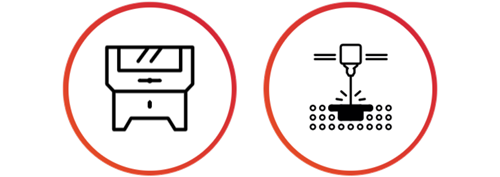
Papers
Evaluation of The Granudrum® As a Tool For Standardized Powder Differentiation - 2020
M. Osman, F. Francqui, J. Tauber, M.Brochu, International Journal of Powder Metallurgy, Volume 56, No. 4, 2020
Recycling metallic powders has become unavoidable in additive manufac-turing (AM), to reduce the process cost, build time, energy consumption, and metallic powder waste.1 However, using recycled powders during the AM pro-cess, while maintaining a high quality feedstock and consequently high part quality, has been a matter of debate.2 Therefore, an efficient testing technique that is capable of discriminating the variations in powder properties is of utmost importance to investigate the effect of recycling powders on powder quality, which allows their use in AM processes. Recently, new powder char-acterization testing techniques have been introduced, such as the rotating drum, which have yet to be standardised to allow their wide use in the AM industry.3 The present study investigates the potential of the GranuDrum® as an efficient tool for standardized powder characterization and its ability to distinguish between different powder flow regimes which allows for recoater speed selection to optimize the AM process.
The GranuDrum® from GranuTools™ (Awans, Belgium,) shown in Figure 1(a), is a granular material dynamic flow analyzer. The technique uses a trans-parent drum filled with 50 cm3 of powder, as shown in Figure 1(b), rotated at different angular velocities to induce powder flow. The rotating drum is back-lighted and a camera is used to capture images (up to 50 pictures at 0.5 s intervals). The location of the interface between the air and the powder was determined by proprietary algorithms and its average position as well as the deviations around this average position were analysed for each velocity. A rep-resentation of the interface determination is presented in Figure 1(c). The two main metrics used during testing were the dynamic angle of repose (DAR) (θ), and the cohesive index (CI). The link between the cohesive index and the homogeneity of the layers in an AM unit has been demonstrated elsewhere.
